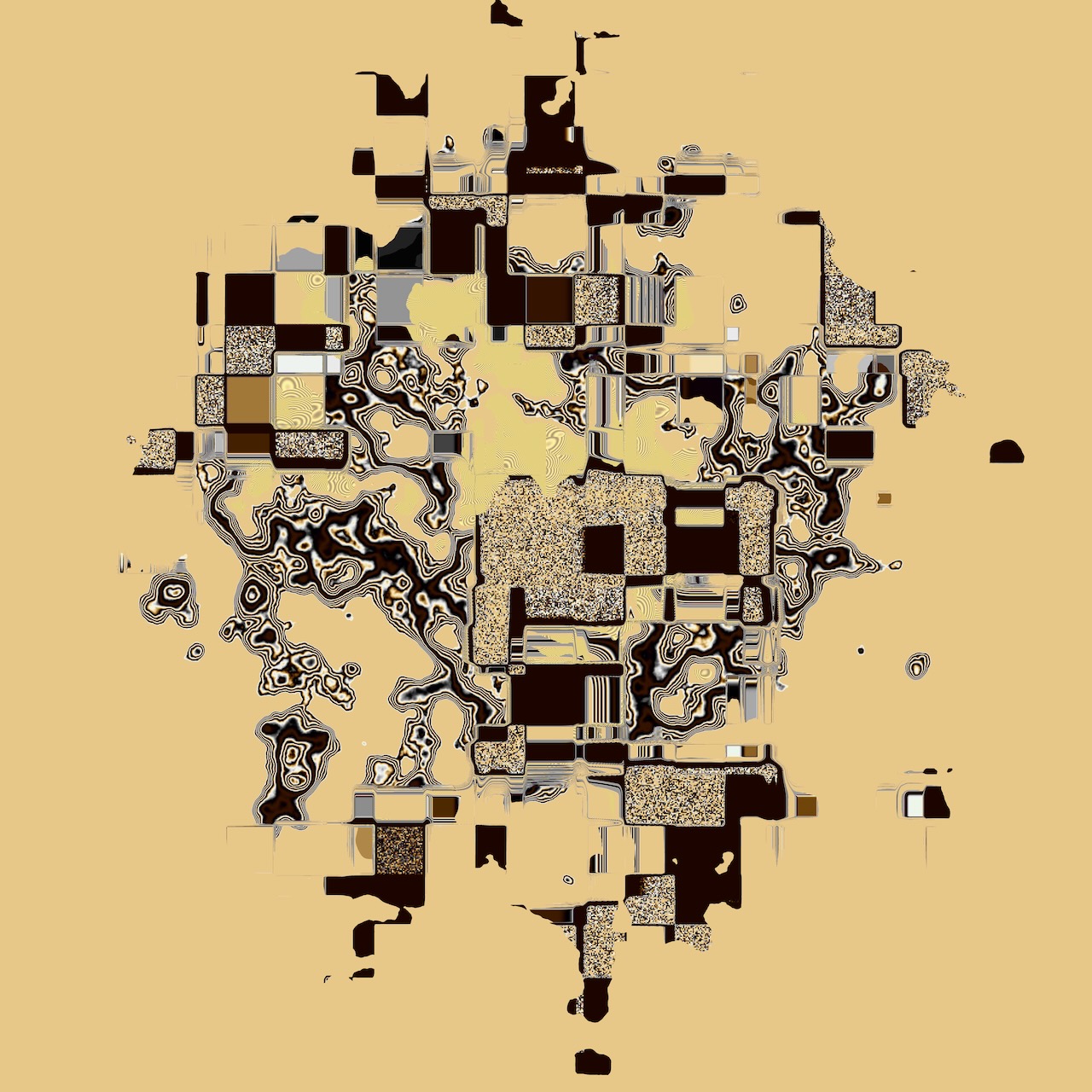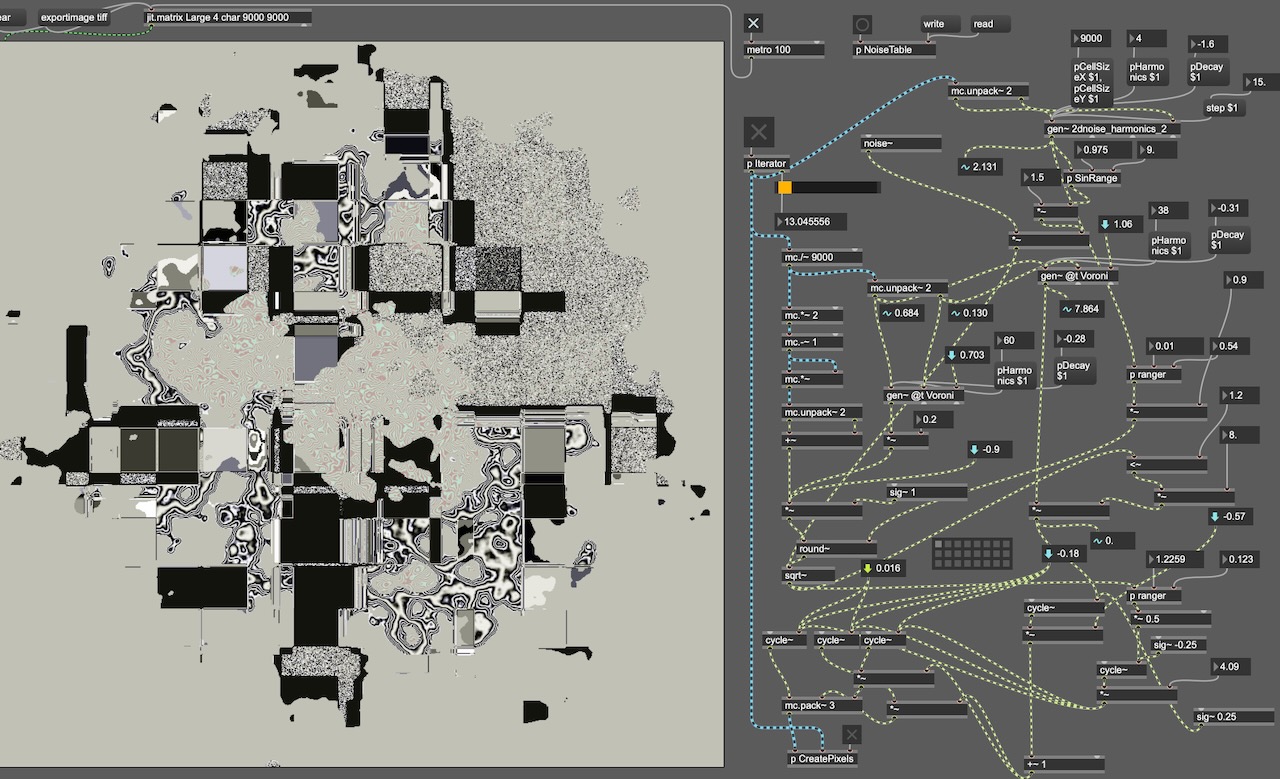Noise Patterns
Computer generated graphics [2022,2024]

Noise and patterns seem to be polar opposites. A pattern is a regular repeating structure, whilst noise is the unpredictable non-information inherent in all technical processes. System designers and engineers usually try to minimise that.
Yet, noise is the motor of it all: It drives the random gene modifications powering evolution, helps finding ways out of labyrinths and makes the sound of a snare drum interesting.
Teaching computers to generate 'real' noise, this stream of never repeating random numbers, is impossible. But smart people found a variety of mathematical ways to create sequences of numbers that do not show obvious repetition. A huge variety of such Pseudo Random Number Generators (PNRGs) have been developed: Basic ones that are good enough for a simple game, and highly complex ones that never expose a pattern in a few million years.
The pioneers of computer generated art in the mid 20th century quickly figured out that combining simple drawing algorithms with random variation is extremely powerful. The fascinating beauty of early works by Manfred Mohr, Vera Molnár and others clearly show this. Not much later computer animation developers learned to harness random variation on larger scales and were able to create convincing mountain ranges and dramatic clouds moving on distant planets.

The 'Noise Patterns' series is a continuation of the artistic practise of the early pioneers. The software driving it was originally developed by the artist to generate background textures for a performative laser graphics project, but quickly evolved into a dedicated body of work itself.
'Noise Patterns' uses variants of classic 2D random generators to form warped surfaces, textured terrains and clouds of pixels.
The process of creation involves the development of the algorithms and then tuning them until something beautiful emerges. The outcome often radically evolves during the process, in a dialogue between the rigid code, the unpredictable noise and the parameter settings, reflecting the aesthetic preferences of the creator.
Once interesting shapes emerge, the program can run using different sets of random numbers until 'good' unique manifestations are extracted. As is typical with computer generated art, creating endless variants is easy once the code has been written. What matters is the curation, the careful process of selection.
Results considered good are rendered in high resolution and their code, parameters and noise series are archived for future re-creation or modification into something new.
Code written by the artist using Cycling74's Max/MSP environment.
